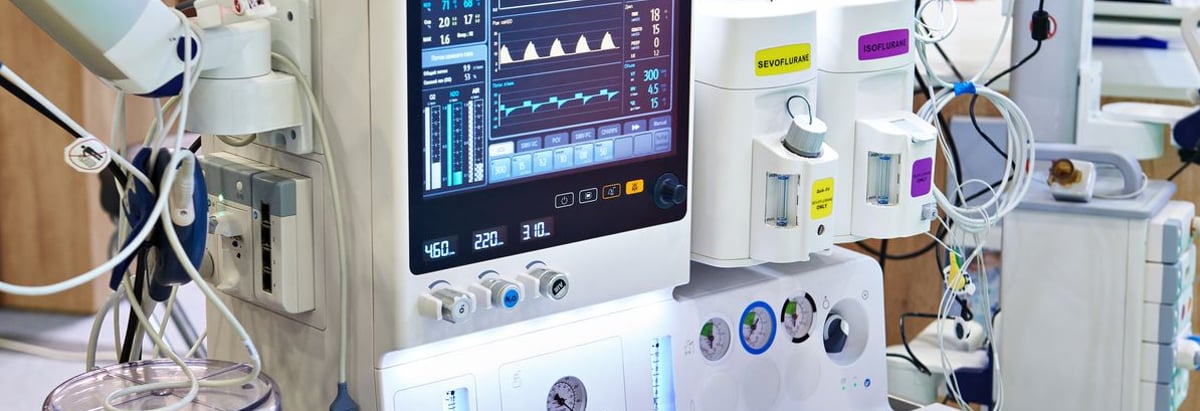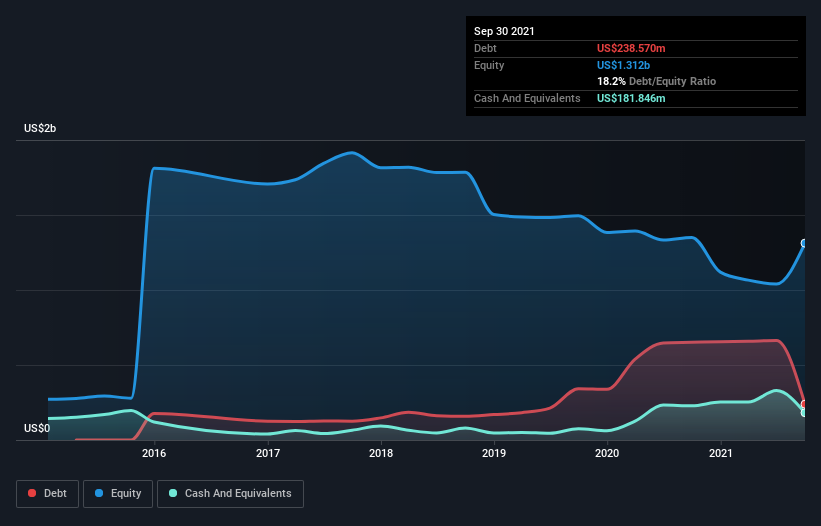- United States
- /
- Medical Equipment
- /
- NasdaqGS:LIVN
Does LivaNova (NASDAQ:LIVN) Have A Healthy Balance Sheet?

Legendary fund manager Li Lu (who Charlie Munger backed) once said, 'The biggest investment risk is not the volatility of prices, but whether you will suffer a permanent loss of capital.' When we think about how risky a company is, we always like to look at its use of debt, since debt overload can lead to ruin. We can see that LivaNova PLC (NASDAQ:LIVN) does use debt in its business. But should shareholders be worried about its use of debt?
When Is Debt A Problem?
Generally speaking, debt only becomes a real problem when a company can't easily pay it off, either by raising capital or with its own cash flow. Ultimately, if the company can't fulfill its legal obligations to repay debt, shareholders could walk away with nothing. While that is not too common, we often do see indebted companies permanently diluting shareholders because lenders force them to raise capital at a distressed price. Having said that, the most common situation is where a company manages its debt reasonably well - and to its own advantage. When we think about a company's use of debt, we first look at cash and debt together.
Check out our latest analysis for LivaNova
What Is LivaNova's Net Debt?
The image below, which you can click on for greater detail, shows that LivaNova had debt of US$238.6m at the end of September 2021, a reduction from US$651.2m over a year. However, because it has a cash reserve of US$181.8m, its net debt is less, at about US$56.7m.

How Healthy Is LivaNova's Balance Sheet?
According to the last reported balance sheet, LivaNova had liabilities of US$658.5m due within 12 months, and liabilities of US$232.4m due beyond 12 months. Offsetting this, it had US$181.8m in cash and US$182.0m in receivables that were due within 12 months. So its liabilities total US$527.1m more than the combination of its cash and short-term receivables.
Of course, LivaNova has a market capitalization of US$4.44b, so these liabilities are probably manageable. Having said that, it's clear that we should continue to monitor its balance sheet, lest it change for the worse. Carrying virtually no net debt, LivaNova has a very light debt load indeed.
We use two main ratios to inform us about debt levels relative to earnings. The first is net debt divided by earnings before interest, tax, depreciation, and amortization (EBITDA), while the second is how many times its earnings before interest and tax (EBIT) covers its interest expense (or its interest cover, for short). Thus we consider debt relative to earnings both with and without depreciation and amortization expenses.
LivaNova has a very low debt to EBITDA ratio of 0.88 so it is strange to see weak interest coverage, with last year's EBIT being only 0.19 times the interest expense. So one way or the other, it's clear the debt levels are not trivial. Notably, LivaNova's EBIT launched higher than Elon Musk, gaining a whopping 467% on last year. When analysing debt levels, the balance sheet is the obvious place to start. But ultimately the future profitability of the business will decide if LivaNova can strengthen its balance sheet over time. So if you want to see what the professionals think, you might find this free report on analyst profit forecasts to be interesting.
But our final consideration is also important, because a company cannot pay debt with paper profits; it needs cold hard cash. So the logical step is to look at the proportion of that EBIT that is matched by actual free cash flow. Over the last three years, LivaNova saw substantial negative free cash flow, in total. While investors are no doubt expecting a reversal of that situation in due course, it clearly does mean its use of debt is more risky.
Our View
LivaNova's conversion of EBIT to free cash flow was a real negative on this analysis, as was its interest cover. But like a ballerina ending on a perfect pirouette, it has not trouble growing its EBIT. It's also worth noting that LivaNova is in the Medical Equipment industry, which is often considered to be quite defensive. Looking at all this data makes us feel a little cautious about LivaNova's debt levels. While we appreciate debt can enhance returns on equity, we'd suggest that shareholders keep close watch on its debt levels, lest they increase. There's no doubt that we learn most about debt from the balance sheet. However, not all investment risk resides within the balance sheet - far from it. These risks can be hard to spot. Every company has them, and we've spotted 2 warning signs for LivaNova you should know about.
Of course, if you're the type of investor who prefers buying stocks without the burden of debt, then don't hesitate to discover our exclusive list of net cash growth stocks, today.
New: AI Stock Screener & Alerts
Our new AI Stock Screener scans the market every day to uncover opportunities.
• Dividend Powerhouses (3%+ Yield)
• Undervalued Small Caps with Insider Buying
• High growth Tech and AI Companies
Or build your own from over 50 metrics.
This article by Simply Wall St is general in nature. We provide commentary based on historical data and analyst forecasts only using an unbiased methodology and our articles are not intended to be financial advice. It does not constitute a recommendation to buy or sell any stock, and does not take account of your objectives, or your financial situation. We aim to bring you long-term focused analysis driven by fundamental data. Note that our analysis may not factor in the latest price-sensitive company announcements or qualitative material. Simply Wall St has no position in any stocks mentioned.
Have feedback on this article? Concerned about the content? Get in touch with us directly. Alternatively, email editorial-team (at) simplywallst.com.
About NasdaqGS:LIVN
LivaNova
A medical technology company, designs, develops, manufactures, markets, and sells products and therapies for neurological and cardiac conditions worldwide.
Undervalued with excellent balance sheet.
Similar Companies
Market Insights
Community Narratives



